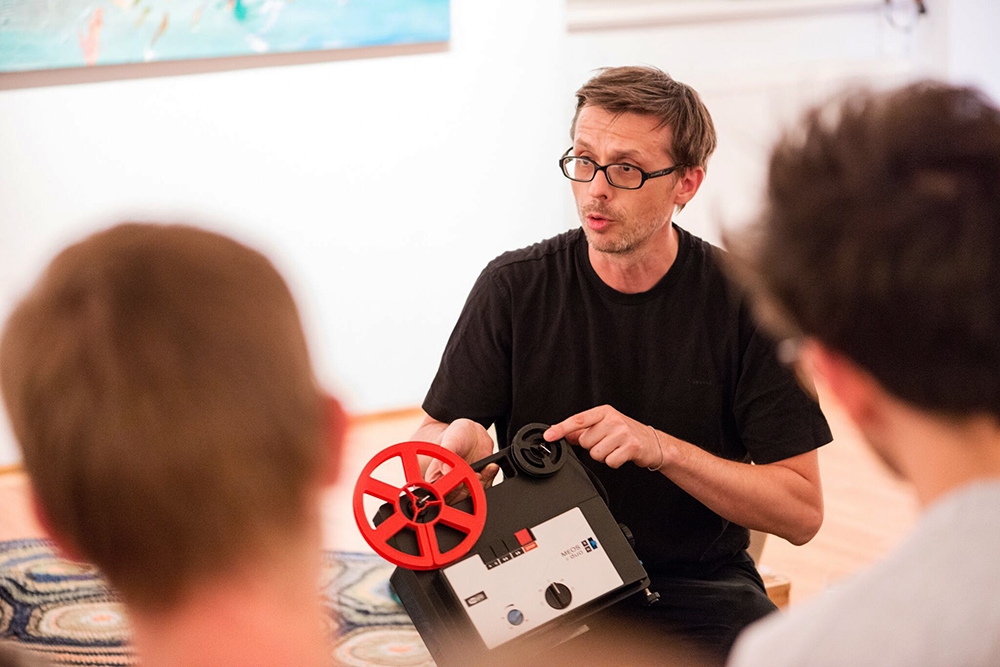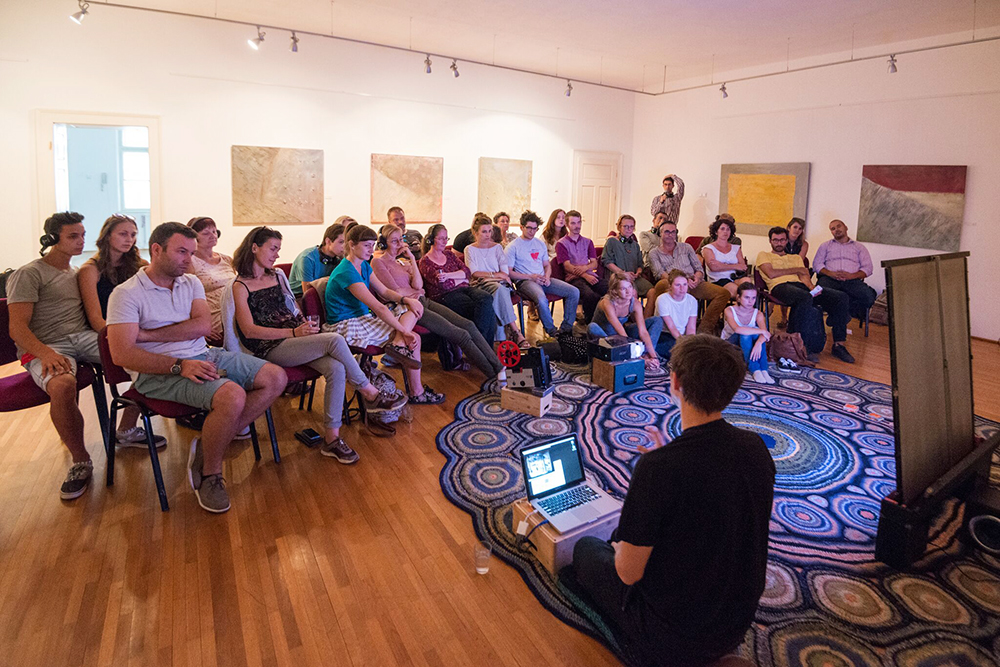Since 2013 he has been collaborating with Iwona Nowacka. He uses archival film materials in his works and focuses on the process of narrating. The artist also believes in the power of the place, which has got its own story, waiting to be uncovered. Turkowski’s performances, created in a duo with Nowacka are, as they put it, ‘distinguished by detective methods, self-irony and humour’. Using the discovered films and traces, Turkowski and Nowacka (re)construct biographies and problematise the documentary genres. Their ‘videotales’ are put on in Poland and abroad: the performance Margarete was presented at the Dublin Theatre Festival 2013 and the Under the Radar Festival in New York. It’s Happening in Norwich was produced in the UK, the project Smalfilm was created in Gröningen in the Netherlands, and Klosterhof was a return to the point of origin, the Kana Theatre in Szczecin.
That is what the creators wrote about Margarete:
Margarete tells a story of a purchase of 64 film reels that belong to a random person, a woman who lives on the borderline of eastern Germany. It is made out of sheer curiosity. The fascination with the asethetic value of the picture of an old film and the sentimental journey to the times of socialist stage design go together with getting to know the processing operations and reusing the original material. This is a reflection on how things are etched in our memory and a private investigation regarding the identity of people who leave their traces on a blank film.
 Photo from the performance Margarete, photo: Kana Theatre Centre
Photo from the performance Margarete, photo: Kana Theatre CentreThe air of Margarete resembles the one of a friendly meeting: the distance between the narrator, Turkowski, and the audience is shortened to the minimum, which is also facililitated by the formal arrangement of the event. The incredible aura of the performance was noticed by Kinga Cieśluk on the website 'Teatralia':
Watching Margarete seems like a dream. (Un)familiar places, unknown people seen through a camera lens, a time of reflection and uncertainty of what will happen after the next flash of the projector. The space of the Kana Theatre, meticulously designed and prepared specially for the event, becomes a makeshift house where we watch some old images being projected while sitting on a felt carpet and drinking tea. It feels like Christmas, when everyone gathers around the table of the oldest woman in the family. Margarete Ruhbe could be a grandmother of one of us. (…) We are witnesses of what she tries to see and hear from these barely visible notes and echoes of her youth.
 Photo from the performance Margarete, photo: Kana Theatre Centre
Photo from the performance Margarete, photo: Kana Theatre CentreIt's Happening in Norwich, which premiered on 19 May 2016 during Norfolk&Norwich Festival, is a performance whose starting point is the work of Charles Scott, an amateur film-maker who documented the life of the British city between 1933 and 1974. Turkowski and Nowacka decided to carry on with the disrupted work using Scott's archival materials.
A similar practice was employed by Turkowski in the making of the project Smalfilm in Gröningen (premiere in 2016), inspired by the story of a local club of amateur film-makers which had been active since the 1930s. The preserved film reels were the foundation of the videoperformance, along with the documents concerning the members of the group.
Klosterhof was clearly an attempt to refer to the same documentary practice. The performance premiered on 30 December 2017 in Szczecin and, as the creators declared:
It asks the question about the sense of documenting and people's age-long desire for symbolic immortality and leaving a trace on Earth. The film material with an accompanying narration serves as an introduction to a pondering upon the concept of observation. By thinking of the coexistence of the past generations in a particular place, Klosterhof tries to investigate what possibilities of preserving the 'vision of the moment' are provided by modern documentary techniques.
 Photo from the performance Margarete, photo: Kana Theatre Centre
Photo from the performance Margarete, photo: Kana Theatre CentreTurkowski's works continuously refer to his own strategies of transferring knowledge and narrating stories. They fit into the counterfactual current in art, which challenges what has been recognised as the official version of events and creates variations of the visions of the future. Turkowski's performances have the potential to open a dialogue on the nature of the relation between the narrator and the listener/viewer, and on the boundary between a real story and fantasy. They simultaneously ask questions regarding the documentary form and its derivative, mockdocumentary, which uses the formula and tools of the documentary with a parodic and/or critical purpose.
Sources: press materials, the artist's website.
Written by Marcelina Obarska, translated by MW, February 2018